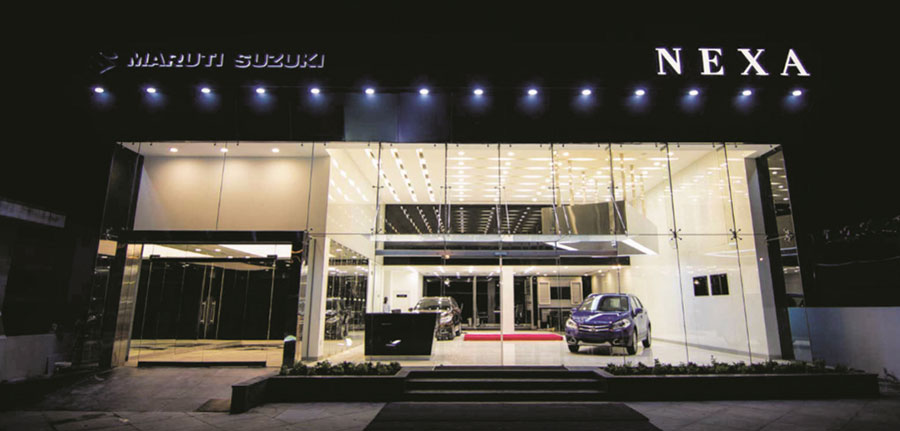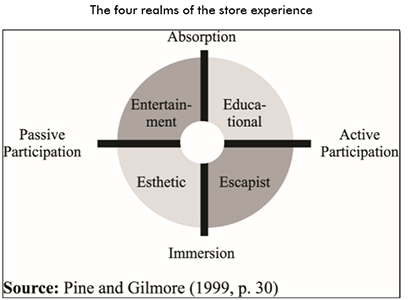Managing the Infovore Consumer: Framework for Digital Point of Sale
By Kiran Mahasuar & Siddharth Deshmukh | October 09, 2017
The key point of difference is value need not be value for money; it could also be experiential and service value, i.e. influenced by cultural, social and psychological factors.
 A relative newcomer to in-store retail, Apple has swiftly become the world’s most successful retailer, selling nearly two times as much – $5,647 per square foot, or $473,000 per employee – than its closest rival, Tiffany’s. Now, this is a dichotomy at times when “scan-and-buy” smart-phone apps such Amazon’s Price Check allows showrooming* shoppers to scan a product, access product information and reviews, and find local and online competitor prices. It is also at odds with the tenets of basic behavioral economics which tells us that consumer behavior works on the simple principle of value maximization; people seek to get the best perceived value for the price paid – the best bang for their buck.
A relative newcomer to in-store retail, Apple has swiftly become the world’s most successful retailer, selling nearly two times as much – $5,647 per square foot, or $473,000 per employee – than its closest rival, Tiffany’s. Now, this is a dichotomy at times when “scan-and-buy” smart-phone apps such Amazon’s Price Check allows showrooming* shoppers to scan a product, access product information and reviews, and find local and online competitor prices. It is also at odds with the tenets of basic behavioral economics which tells us that consumer behavior works on the simple principle of value maximization; people seek to get the best perceived value for the price paid – the best bang for their buck.
The answer lies in understanding the concept of Value for Money. The key point of difference is value need not be value for money; it could also be experiential and service value, i.e. influenced by cultural, social and psychological factors. In a world of increasing commoditization of retail, the opportunity for retailers is to create and capture customer value in-store.
The critical narratives that have emerged in the process of enhancing the Consumer Perceived Value (CPV) are the how to tackle the Infovore consumer in-store and the ingredients of a sustainable consumer experience model.
Managing the Infovore consumers
Brands and business models don’t work in isolation and hence the operating model must maintain the consumer at the core of its framework. Traditional retailers had a tendency to invest in an assetheavy and technology-light model .The consequent effect is though In-store shopping is experientially rich but it is typically informationpoor, and this is at contrast with the expectations of the “infovore” that is the connected consumer. Retailers have traditionally sought to restrict and manage information available to store guests, acting as informational gatekeepers and careful managers of the store’s “info-sphere. The key to understanding a consumer is to find out what he/she desires to achieve from the shopping experience. Broadly, the connected consumer aspires to be satiated for three major stimuli: immediacy, convenience and service. Let us take the example of Apple & understand how Digital POS technology can help deliver better instant gratification to in-store shoppers and make the experience smoother, faster and more rewarding.
 1.Immediacy
1.Immediacy
Worldwide, several retailers are using digital technology to address the key pain point at a store level: queuing. Apple is eliminating queues by allowing shoppers to self-checkout with smart-phone apps. Apple also equips floor staff with handheld mobile checkout devices for those seeking assistance in check-out out by Apple employees. This takes place straight in the aisle and without waiting in line. In addition to this, Apple has streamlined the shopping experience further by reducing another type of in-store ‘wait-time,’ waiting to see sales or service associate. Apple encourages customers to schedule and pre-book store appointments through its online store app.
2.Service
A second key strength of storebased retail is personal service. Dubbed the “me-tailing’ movement in retail, consumers have increasing expectations of personalized services, offers and products. For Apple, the in-store personal service experience begins when a customer books a personal concierge appointment. On arrival at the store, customers can check in for appointments at POS tablet stations and a store representative will personally come to greet them. POS service stations located throughout the store give the employee access to the customer’s appointment notes, CRM data and purchase history, helping them tailor the service experience to the customer’s needs. POS service stations on Apple’s Genius Bar offer free diagnostic profiling and testing services. The note-worthy point is Apple’s POS services are digitally assisted, not digitally automated which underlines the impact of human contact.
3. Convenience
The cornerstone of an online shopping model is convenience. Apple compensates somewhat for this by offering a convenient reserve-online-pick-up-in-store service, with the added bonus of a free set-up session at the POS service station in-store. By removing wait-time pain points from the store experience, Apple further increases store convenience, including an e-receipt service where purchase receipts are emailed to consumers . Apple resellers are also enhancing brand convenience digitally by installing Apple “iStore” vending machines at airports and in shopping malls.
 Ingredients of a sustainable Consumer Experience Model
Ingredients of a sustainable Consumer Experience Model
A key strength of in-store retail is its ability to deliver a rich multisensory experience that builds choice-shaping associations in the mind of the customer. The highly referred Harvard Business Review article “Welcome to the Experience Economy” identifies four key “realms” of experience which is outlined in Illustration -1
Illustration -1:“Welcome to the Experience Economy,” Harvard Business Review, July-August
We take the example of a recent success, NEXA Exclusive, an initiative by Maruti Suzuki India Limited that caters to the needs of a growing segment of car buying Indians who desire and value personal care, warmth and attention in their car buying and ownership experience.
Entertainment – experiences that make you smile, such as NEXA Owner’s App, which helps the customer to recall service history, seek emergency support, buy accessory, get event updates,  and manage booking and service requests and even a choice of favorite music.
and manage booking and service requests and even a choice of favorite music.
Educational – learning experiences that enrich, such as assisted or automated demos of Maruti’s premium cars inside the showroom itself. Secondly unlike the other car showrooms, a NEXA showroom has only one car per model & uses digital technology to show the consumer on how different color looks on the car
Esthetic – Immersive and sensorial experiences that please, such as the elegant digital signage & monochrome theme in Maruti Nexa stores. A team from Japan helped in setting the lighting in the showrooms right. Instead of using the flat light, they focused the spotlight on the car using professional light to give a majestic look to the car which is the only colored element inside the showroom.
Escapist – Essentially distracting experiences that captivate attention, such as the big-screen theatre installations in NEXA Showrooms equipped with a car configurator which provides a virtual experience to the customer and also showcases a wall-mounted display that is connected to iPads.
The key is not to focus on the technology, but on the benefit that the technology delivers. At the core of the consumer experience framework, it has to be the Consumer aided by a consistent & sustainable business model


_165_265.jpg)
_165_265.jpg)





Comments